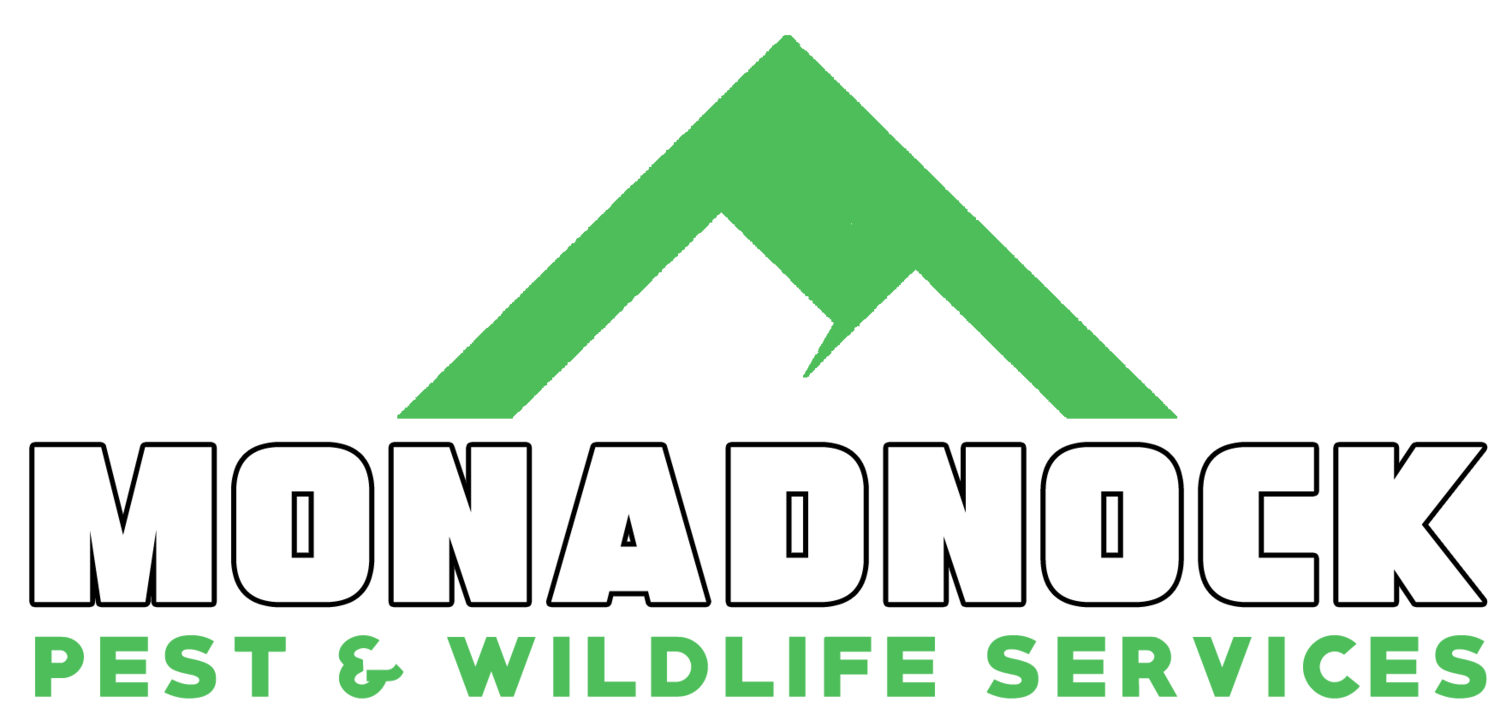Late Season Stingers: The “buzz” with Autumn yellow-jacket activity.
In the pest & wildlife control industry, there’s several seasonal trends that one can set their watch to. Yellow Jacket activity in late summer and early autumn are certainly one on those trends!
Just as sure as the leaves will change color and the apple orchards will flood with patrons seeking fall festivities, the Monadnock Pest HQ phone will ring, and town social media pages will propagate with endless posts inquiring about the overwhelming presence of striped stinging insects such as the Yellow Jacket - and as I’ll explain, those aforementioned apple orchards actually have a little to do with it.
Yellow Jackets (V. germanica, V. alascensis, & V. maculifrons), are a common species of wasp found in plentiful supply here in New Hampshire. They are notorious for building elaborate nests on the sides of homes, inside wall voids & structure gaps, or commandeering abandoned chipmunk holes in the ground for subterranean harborage. Unsuspecting citizens are usually made aware of their presence when the wasps ferociously defend their nest as a result of a perceived threat - most commonly, the lawnmower or pedestrian walking too close to an active nest entrance.
While present throughout the spring and summer, yellow jacket nests are at their largest during late summer and early fall (with each nest boasting roughly 1,000-4,000 workers). As the number of developing larvae increases throughout the season, workers will forage and expand upon the nest construction; doubling the size of the colony every few weeks throughout the summer. By July, this is typically when calls from the public for nest remediation increases - and August of 2021 was no exception for Monadnock Pest - with a steady stream of otherwise unnoticed nests now being discovered by property owners around yards and common areas.
At the same time these nests are peaking in size, they’re also beginning to undergo a social breakdown. Throughout the spring, Yellow Jacket nests mimic similar social structures to that of other social insects such as ants and termites. There’s a Queen, followed by workers and foragers tending to the brood. This time of year, however, Yellow Jacket workers have been busy constructing larger reproductive cells within the nest, which will develop new queens. Male Yellow Jackets are also being produced in a late season colony - both of which will leave their current nest, mate independently, and fertilize the female “future queens”.
As Autumn progresses, the foraging behaviors of these reproductives (as well as workers from the main colony) are kicked into hyper-overdrive; as each wasp’s biological clock signals a demand for sugar stores to survive the cold winter. With pollen and nectar-bearing plants in short supply, the Yellow Jacket’s demand for sugars must be quenched by any means necessary. Remember my apple orchard reference? The sugars in freshly dropped and fermenting fruits - like apples - are a perfect food source for foraging wasps.
Additionally, other prime fall sources of sugars include Hummingbird Feeders, honeydew secreted by scale insects on some ornamental plants and trees, as well as (possibly the most noticeable) those un-rinsed soda cans at your local dump. Its not uncommon for masses of foraging Yellow Jackets to be seen in great supply at these locations. , and although quite intimidating in appearance, these masses of stinging insects are typically non-aggressive if left to their foraging desires unabated. Since these insects aren’t directly defending a nest, their presence is otherwise benign. Although it is strongly advised to exercise caution around these foraging masses nonetheless.
The mad-dash for sugars, while impressive, is a futile endeavor for most - as only the newly fertilized queens will be hardy enough to tough out winter’s cold grasp and start a colony anew in the following spring. The majority of males and workers will succumb to winter’s cold grip; putting an end to both their presence and that year’s nest site. A new nest location will be chosen and constructed by the fertilized “queens” in the spring.
Foraging yellow jackets collect on a fresh apple drop this fall. (Photo | Monadnock Pest & Wildlife Services)
These fertilized wasps will look for a protected site, such as under loose tree bark, or in the gaps and voids of homes, to spend the winter.
These fall foraging behaviors aren’t just relegated to Yellow Jackets, either. Other wasp species such as the Paper Wasp, as well as Hornets and Honey Bees, are also actively foraging for winter stores.
So enjoy those fall apple picking adventures and savor the fleeting outdoor antics of Autumn safely, and “bee” aware of foraging wasps and their characteristics on your daily journey.
How Can Monadnock Help?
Have concerns with a Yellow Jacket nest or presence?
While the presence of these “striped stingers” on sugary substances in Autumn is nothing more than yet another shining example of nature’s seasonal grand cycles, active nests do have the potential to pose a public safety threat to people and pets. We at Monadnock Pest & Wildlife Services are fully trained in the identification and safe, proper treatment of Yellow Jacket nests and stinging insect control - while being mindful of beneficial pollinators.
We can customize our services to fit your needs, whether you’re looking for a one-time nest treatment & removal, or one of our comprehensive prevention programs such as our Home Protection or Business Protection plans.
Contact Monadnock Pest & Wildlife today to address your stinging insect control needs. With over 30 years pest control experience, and our owners in the field providing the service, we’re New Hampshire’s most comprehensive wasp control professionals!


